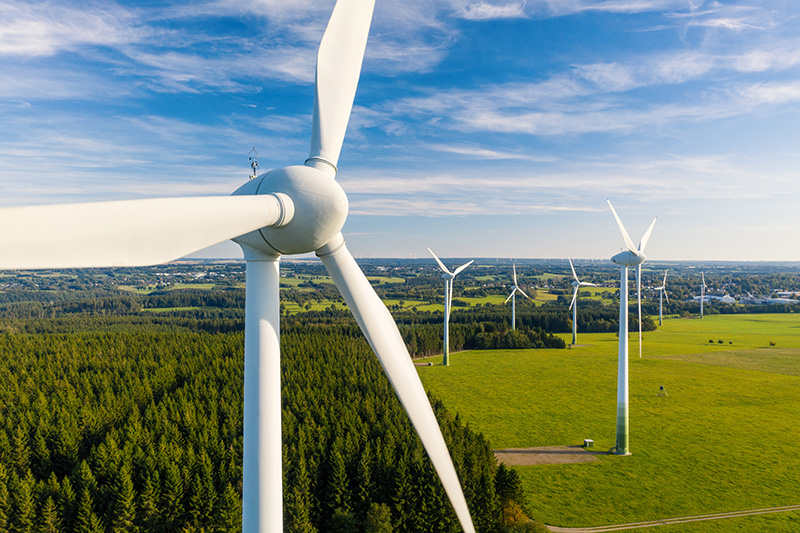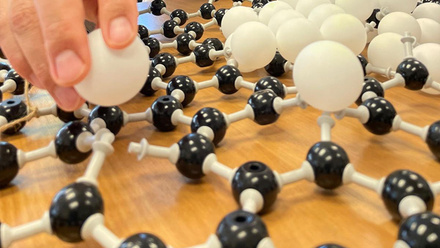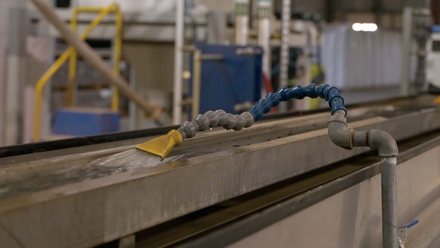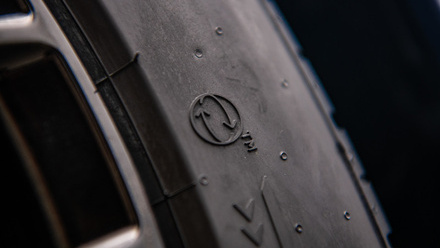Epoxy resin broken down to recycle legacy wind turbine blades
Vestas Wind Systems A/S in Denmark is presenting a new solution that it claims renders epoxy-based turbine blades as circular, without the need to change the design or composition of the blade material.

A process that can chemically break down epoxy resin into virgin-grade materials could be applied to legacy blades, as well as those currently in operation.
Once matured, this will eliminate the need for blade redesign, or landfill disposal of epoxy-based blades when they are decommissioned.
Turbine blades have previously been challenging to recycle due to the chemical properties of epoxy resin, a resilient substance that was believed to be impossible to break down into reusable components.
Vestas’ solution is enabled by a newly discovered chemical technology developed within the Circular Economy for Thermosets Epoxy Composites (CETEC) initiative started in 2021 – a coalition of industry and academic partners.
Kristian Holmelund Jakobsen of Vestas says, 'There are limits to the level of details that we can go into, but basically the epoxy-infused blades will be exposed to a liquid, based on commoditised chemicals that will penetrate the structure and break the epoxy into fragments. The various materials of the blade can be peeled from each other and can then be sent to individual recycling routes. The epoxy fragments are further treated and are thereby converted into base-chemicals with virgin-grade quality that can be used for producing new epoxy.'
The proprietary process means Jakobsen cannot name the chemicals used to break down the resin.
Jakobson says, 'The CETEC project originally set out to develop a new epoxy resin that could be more easily treated and recycled. With the newly discovered chemical process, developed in the CETEC project, we can now circumvent that step and create a pathway toward blade circularity that begins today.
'With the new solution, we can start now rather than waiting approximately 30 years for products with novel recyclable resins to reach end-of-life. That means we can accelerate the timeline for blade recycling by decades and include epoxy blades currently in operation.'
Through a newly established value chain, supported by Nordic recycling leader Stena Recycling and global epoxy manufacturer Olin, Vestas will now focus on scaling up the chemical disassembly process into a commercial solution. Patent applications have been submitted by partners in CETEC.
The partnership between Olin, Stena Recycling and Vestas covers a two-year pilot project. The partners will begin to scale up the circular blade recycling solution based on the pilot success.
Once mature, the inventors believe the solution will signal the beginning of a circular economy for all existing and future epoxy-based turbine blades.
For several decades, producing wind-turbine blades manufactured with epoxy-based resin has been standard practice in the wind energy industry. In the most mature markets for wind energy, the first turbines are reaching the end of their operational life and this will increase over the coming years.
WindEurope expects around 25,000t of blades to reach the end of their operational life annually by 2025.
Lisa Ekstrand, Vice President at Vestas, says, 'Until now, the wind industry has believed that turbine-blade material calls for a new approach to design and manufacture to be either recyclable, or beyond this, circular, at end-of-life. Going forward, we can now view old epoxy-based blades as a source of raw material. Once this new technology is implemented at scale, legacy blade material currently sitting in landfill, as well as blade material in active wind farms, can be disassembled and reused. This signals a new era for the wind industry, and accelerates our journey towards achieving circularity.'
Vestas claims the solution also signals the possibility to recycle all epoxy-based composite materials for a broader circular economy, potentially encompassing industries beyond wind energy.







